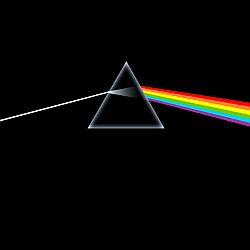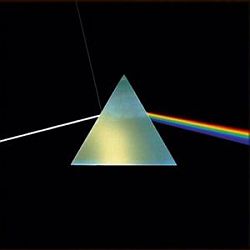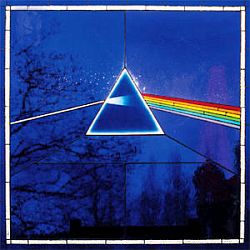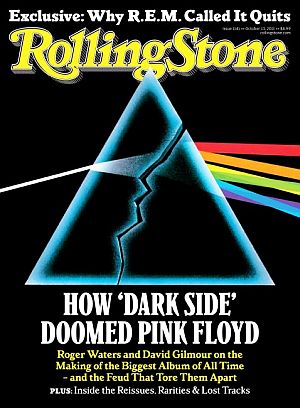A 1973 album of progressive rock music named The Dark Side of the Moon, by the British group Pink Floyd, has distinguished itself on several fronts in the annals of modern music. For starters, it stayed on Billboard’s top 200 albums sales chart for 741 consecutive weeks — from March 1973 to April 1988. That’s a total period of 14 years — a longer popular presence on the music charts than any other album in the history of modern music charting.
Dark Side’s 1973-1988 chart run, in fact, survived four U.S. presidents – Richard Nixon, Gerald Ford, Jimmy Carter, and Ronald Reagan. Four World Cup soccer championships were played during that time, as were a dozen Super Bowls and World Series. A child that began elementary school in the fall of 1973, would have graduated high school and gone into the work world or on to college as Dark Side continued its “consecutive weeks” chart run. But there’s still more.
By May 1991, after Billboard started using its Top Pop Catalog Albums chart – a fifty-position weekly chart for older albums more than 18 months old, but falling below No. 100 on the Billboard 200 – Pink Floyd’s Dark Side held forth there as well. In fact, as of February 2019, Dark Side held the “total weeks” longevity record at something north of 1,630 total weeks — i.e., weeks on both the Billboard 200 and the Top Pop Catalog charts.
Still, the album’s Billboard heroics is less than half the story, as Dark Side of the Moon, to this day — now past its 45th anniversary year (2018) — continues to be popular. Even when it came off its consecutive weeks run of 14 years in 1988, it remained a very lucrative money machine through the 1990s and beyond.
By April 1998, the Recording Industry Association of America (RIAA) certified that Dark Side had sold 15 million copies in the U.S. alone. By 2002, it was still selling – 400,000 copies annually in the U.S., placing it among that year’s 200 best-selling albums. By 2004, it was selling an average of 7,000-to-8,000 copies per week in the U.S. with cumulative sales worldwide then totaling over 40 million. By December 2006, the New York Times reported that the Dark Side of the Moon was still selling “nearly 10,000 copies a week.”
As of 2012, the album had sold an estimated 50 million copies worldwide. At a $10-an-album “ball park” estimate, that’s roughly $500 million in gross revenue, a respectable sum that many corporations would envy. And that of course does not include Dark Side’s “share” of Pink Floyd’s concert and touring revenue.
In any case, The Dark Side of the Moon album helped make the members of Pink Floyd very rich. And as their fans well know, that’s only part of the story, as the group had other hit albums beyond Dark Side, including The Wall of 1979, which was also a giant hit and major money-maker.
Pink Floyd recorded The Dark Side of the Moon between May 1972 and January 1973 at Abbey Road studios in London. The group’s principal musicians at the time consisted of Roger Waters (bass, synthesizer, vocals), Nick Mason (drums), Richard Wright (keyboards, synthesizers), and David Gilmour (guitar, vocals). The title of the album is an allusion to mental illness rather than astronomy, though Pink Floyd’s music is sometimes called “space rock.”

Early 1970s: Pink Floyd members, from left: Rick Wright, Roger Waters, Nick Mason, and David Gilmour.
Released in March 1973, Dark Side became an instant chart success in the U.K., Western Europe, and the U.S. It rose to No.1 on the Billboard chart on April 28, 1973 beginning its record-breaking 741 weeks on Billboard’s Top 200 album chart. The album was a key breakthrough for the group.
“With the release of Dark Side of the Moon,” reported one Rolling Stone profile, “Pink Floyd abruptly went from a moderately successful acid-rock band to one of rock music’s biggest acts.”
In May 1973, when the album first came out, Rolling Stone reviewer Lloyd Grossman described it as “a fine album with a textural and conceptual richness.” He added: “there is a certain grandeur here that exceeds mere musical melodramatics and is rarely attempted in rock. The Dark Side of the Moon has flash – the true flash that comes from the excellence of a superb performance.”
In Pink Floyd’s Rock ’n Roll Hall of Fame description (they were inducted in 1996) it is noted: “The group carried rock and roll into a dimension that was more cerebral and conceptual than what preceded it.“…What George Orwell and Ray Bradbury were to literature, Pink Floyd is to popular music…”
– Rock `n Roll Hall of Fame What George Orwell and Ray Bradbury were to literature, Pink Floyd is to popular music, forging an unsettling but provocative combination of science fiction and social commentary….” Describing the group’s Dark Side of the Moon, the Rock Hall added: “The album signaled rock’s willingness to move from adolescence into adulthood, conceptually addressing such subjects as aging, madness, money and time. From its prismatic cover artwork to the music therein, Dark Side of the Moon is a classic-rock milestone.” Others found Dark Side’s themes to be quite bleak, covering alienation, paranoia, and schizophrenia. “[T]he music was at once sterile and doomy,” wrote a reviewer for The Rolling Stone Encyclopedia of Rock `n Roll. But in the U.S., Pink Floyd concert tours through the 1970s and beyond helped boost the group’s notice and album sales. One New York Times concert reviewer in 1987 wrote: “…Pink Floyd earned a singular renown in the 1970’s. The band transmuted gloom and cynicism into sumptuous anthems, taking ordinary rock tunes at s-l-o-w tempos and using long instrumental interludes for somber atmosphere…”
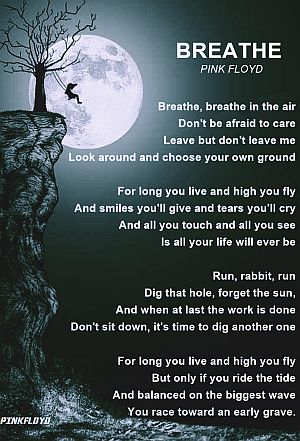
Poster art with lyrics to “Breathe” from “Dark Side” album.
Music Player
“Breathe” – Pink Floyd
David Gilmour and Richard Wright composed the music for this song and Roger Waters wrote the lyrics. Gilmour plays electric and steel guitars and supplies lead and backing vocals; Wright is on organ and electric piano; Waters on bass guitar; and Nick Mason on drums.
Head Music. In the 1970s, Pink Floyd tunes also became a favorite of pot smokers and drug users, and even into the 2000s the band’s music was still drawing that association. “As long as there are potheads, water beds and freshman philosophy majors,” wrote New York Times reporter Sia Michel in a 2006 review of a Roger Waters /Pink Floyd concert, “it [Dark Side of the Moon] will continue to sell thousands of copies every month.” Part of the eternal appeal of the album “is its trippy, vague seriousness,” wrote Michel. “It seems to be a concept album about the difficulties of staying sane in a corrupt modern world. It seems to encourage people to rebel. It seems to encourage people to maintain a childlike state of purity. It seems to address issues like mortality (“Time”), greed (“Money”), war (“Us and Them”) and madness (“Brain Damage”). In short, it sounds really deep when one is zonked out on drugs at 3 a.m. ‘The Dark Side of the Moon’ helped create the template for what a Great Album is conventionally supposed to be: a thematic, sonically adventurous social critique with brain-frying cover art.”
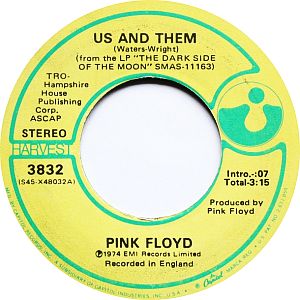
Record label for shortened version (3:15) of “Us & Them” single, released in March 1974. Click for full digital version.
Another of the songs on Dark Side – the seventh track on the album – is titled “Us & Them,” a song that runs nearly eight minutes and is regarded by many as an anti-war song. It was written by Richard Wright with lyrics by Roger Waters and it is sung by David Gilmour, with harmonies by Wright. “Us and Them” was also released as a single and for a time in March 1974, it charted just under the Billboard Hot 100 at No. 101.
The song’s origins date to 1969 as a piano and bass piece that Wright had come up with while working on a song for the soundtrack of the 1970 movie Zabriskie Point. It was then entirely instrumental, but film director Michelangelo Antonioni rejected the piece, calling it “beautiful, but too sad… it makes me think of church.” Antonioni was looking for a more raucous piece for a violent sequence in the film, and would later use another Pink Floyd song adapted for that purpose which did appear on the Zabriskie Point soundtrack and at the film’s cataclysmic ending.
Wright’s original piece, meanwhile, was resurrected and re-worked during the Dark Side Of The Moon recording sessions and it became the basis for “Us and Them,” with Waters adding lyrics. The finished version has hymnal organ qualities, rising choruses, and a couple of saxophone solos; one at the beginning and another toward the end of the song. “Us and Them” is one of the first times Pink Floyd made use of female backup singers – in this case, Liza Strike, Leslie Duncan and Doris Troy to sing background harmonies. The saxophone sections are played by Dick Parry. In December 2012, Roger Waters performed “Us and Them” during his set for the live U.S. hurricane benefit TV concert, “12-12-12: The Concert for Sandy Relief.”
|
“Us and Them” Us, and them Forward he cried from the rear Black and blue Haven’t you heard it’s a battle of words […piano with spoken word sequence….] Down and out Out of the way, it’s a busy day |
Music Player
“Us and Them” – Pink Floyd
Over the years, “Us and Them,” like other songs of this type, has brought varying listener reactions and interpretations. “Steven,” writing from Sparks, Nevada, offered this view at SongFacts.com:
“To assume that ‘Us and Them’ is solely about war is to draw a superficial conclusion. Yes, ‘War’ serves as a metaphor for the separative mentality that modern day people have. But the ‘Down and Out’ stanza is about our refusal to help others in need, because we have ‘things to do.’ Pink Floyd is saying that for the money it would cost for ‘tea and a slice,’ an old man died. This song is about closed-mindedness and the majority of peoples’ inability to empathize with another’s plight, and to furthermore act on this inability, i.e. the general who doesn’t fight alongside his men.”
Another SongFacts.com writer – Aya, from Cairo, Egypt, writes:
“I believe the song describes the tendency of people to partition themselves from those who are different, in cases such as war, politics, and social class. It’s definitely about war but I believe it also encompasses different races and social classes. It’s also alleged that the song was influenced by Roger Waters’ father dying in World War II…”
And “Shane,” from Sandy, Utah, adding his point of view to the SongFacts.com forum on the song, writes:
“Definitely one of the most emotional pieces on Dark Side. The sax does a lot. The lyrics are simple, but sad, powerful, and relatable. This song gives me chills.”
The final song on Dark Side – or rather, the last two songs that run together – are titled “Brain “Damage” and “Eclipse.” The lyrics of the first song have a repeating refrain that includes the album title, “I’ll see you on the dark side of the moon,” which is a reference to insanity.
|
“Brain Damage”/ “Eclipse” Brain Damage The lunatic is in the hall And if the dam breaks open many years too soon The lunatic is in my head And if the cloud bursts, thunder in your ear Eclipse |
Roger Waters, who wrote the song, noted in a 2005 interview: “When I say, ‘I’ll see you on the dark side of the moon’… what I mean [is]… If you feel that you’re the only one…that you seem crazy [because] you think everything is crazy, you’re not alone.”
Waters has also stated that the insanity-themed lyrics are based in part on former Pink Floyd frontman, Syd Barrett’s mental difficulties, as when Barrett lost his place during performances – noted in the line “if the band you’re in starts playing different tunes” – as Barrett suffered a breakdown and eventually left the group.
Sometime in 1971, Waters had worked up a prototype version of the song when it was called “The Dark Side of the Moon.” Eventually this title would be used for the album itself. The band had also called the “Brain Damage” track “Lunatic” during live performances, some recording sessions, and also when they had recorded a new suite entitled, “A Piece for Assorted Lunatics.”
The Real Insanity…
The opening line of the song – “The lunatic is on the grass” – was inspired by one of those “keep-off-the-grass” signs sometimes found at public places and well-manicured estates. Waters has said that the particular sign and patch of grass that fueled his using the phrase was at King’s College, Cambridge.
The ostensible suggestion in the tune is that those ignoring the signs and encroaching on the grass might indicate insanity, though as Waters has stated and the tune implies, the real insanity is not letting people on the grass.
Author Jere O’Neill Surber has compared the lyrics of Dark Side’s “Brain Damage” with Karl Marx’s theory of self-alienation; “there’s someone in my head, but it’s not me.”
Waters’ lyrics throughout Dark Side deal with the pressures of modern life and how those pressures can sometimes cause insanity. He is reported to have viewed the album’s exploration of mental illness as one illuminating a universal condition. Waters also indicated that he wanted the album to be a positive force – “an exhortation… to embrace the positive and reject the negative.”
In the 1987 book, Pink Floyd: Bricks in The Wall, by Karl Dallas, Roger Waters explained the meaning of the final words in the “Eclipse” portion of the song – “and everything under the sun is in tune, but the sun is eclipsed by the moon” – with the following:
I don’t see it as a riddle. The album uses the sun and the moon as symbols; the light and the dark; the good and the bad; the life force as opposed to the death force. I think it’s a very simple statement saying that all the good things life can offer are there for us to grasp, but that the influence of some dark force in our natures prevents us from seizing them. The song addresses the listener and says that if you, the listener, are affected by that force, and if that force is a worry to you, well I feel exactly the same too. The line ‘I’ll see you on the dark side of the moon’ is me speaking to the listener, saying, ‘I know you have these bad feelings and impulses because I do too, and one of the ways I can make direct contact with you is to share with you the fact that I feel bad sometimes.’
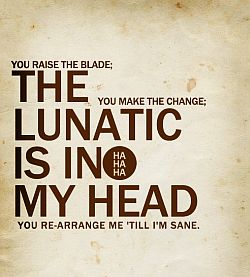
A lyrics poster excerpting from Pink Floyd’s “Brain Damage” on the “Dark Side” album.
Music Player
Pink Floyd- “Brain Damage”/ “Eclipse”
And like the earlier song “Us & Them,” Song Facts.com also received numerous postings about “Brain Damage” and its meaning – in fact, more than 150 such postings. “This is about the ‘insanity’ of adulthood,” wrote “Mick” from Las Vegas, Nevada. “The lunatic actually is sane and society is crazy. The lunatic in the grass is someone who wants to relive the happiness of childhood and has the audacity to walk on the grass, even though society is telling him that everyone should stay on the paths created for them and follow the paths blindly. Also, the ‘lunatic’ is ignoring the newspapers (he leaves their folded faces on the floor) that remind him of the insanity around him. Finally, he gets rearranged until he is ‘sane,’ but now there is someone in his head and it isn’t him.”
Also from SongFacts.com, “Steveb” from Spokane, WA, offered quite a long interpretation, here excerpted from his comments beginning with the following:
“…‘The paper holds their folded faces to the floor, and every day the paper boy brings more’ – I believe that this is a reference to how the newspaper, or general media and their brainwashing techniques, can help subside these thoughts of lunacy by making you realize that the the state of things is how it should be, even though it isn’t. It simply holds them down for a bit, just long enough until the ‘paperboy’(general media) can deliver the next dose of reassuring conformity.
‘If the damn breaks open many years too soon’ – That is a metaphor for snapping in the middle of your life, far before the end of it with so much more to deal with.
‘And if there is no room upon the hill’ – The hill being a famous counterculture symbol for conformity, where the sheep dwell happily and just like each other.
‘And if your head explodes with dark forebodings too, I’ll see you on the dark side of the moon’ – This one is very literal but said in an eloquent manner that goes beyond most people’s heads. If you snap under pressure, while also foreseeing nothing but bad in the future (for both yourself, and the fate of the world), he’ll see you on the dark side of the moon, that hypothetical place where all the wide-eyed outsiders who ‘get it’ will meet and be ridden of the isolation… Shame it doesn’t exist.
‘The lunatic is in my head’ displays the society getting to the person on hand, and ‘you raise the blade, you make the change, you rearrange me til I’m sane’ is a reference to a lobotomy, the lobotomy being a metaphor for conditioning by society.
‘You lock the door, and throw away the key, there’s someone in my head but its not me’ – This line determines the moment where one has now become part of the society, tossed out his individualism, and as the key is gone there is no turning back; he is them and no longer himself.
‘If the cloud bursts thunder in your ear’ – Another metaphor for it all being too much to handle.
‘You shout and no one seems to hear’ – The isolation that the outsiders feel as the select few who know what’s going on… Anyone they try to talk about it to thinks they’re crazy and ignores them…”
Another SongFacts posting from Ric in Florence, Wisconsin, suggested that the “lunatics” described in the folded newspapers – those with their “faces folded to the floor” – were “the politicians, newsmakers of the day, authority figures…” Another asked if “the papers” might have described or represented a kind of “perpetual newspaper/media indoctrination?” David from Ashland City, Tennessee offered that “the dark side of the moon album might represent the dark side of our minds.” And still others at SongFacts indicated they loved the Dark Side album for its simple pleasures – as Mitchell from Adelaide, Australia put it – “more because of the music; it just helps me to relax, zone out.”
|
“Oz Synchronicity” 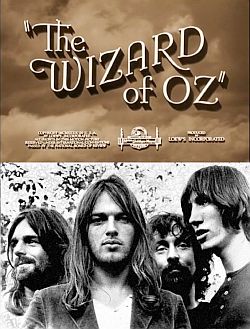 Pink Floyd members have said it’s just not so! One wag had stated that if you started the music precisely on the third roar of the MGM lion at the outset of the film, all sorts of curious things would follow. Among the so called “synchronicities” is one that reportedly occurs when Roger Waters sings the phrase “look around,” and Dorothy looks around. Another comes when the chimes that usher in the song “Time” coincide with the appearance of the Wicked Witch of the West on her bike, then stops when she dismounts. And with the phrase, “you raise the blade, you make the change,” the tin man raises a huge blade as he and the others change their clothes to look like the witch’s army. And the list goes on with many more. One website has compiled a list of 100 or so of these purported synchronicities. Yet, members of Pink Floyd have denied that there was any doing on their part to bring any of this about, and that whatever coincidences there may be between the film and the music, they are just that, and perhaps come about more from listener/viewer interpretation than any pre-set arrangement between Dark Side’s music and the film. |
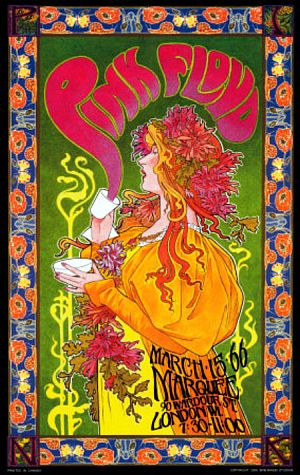
Poster advertising Pink Floyd’s March 15, 1966 appearance at the Marquee club in London. Click for poster.
Pink Floyd without Waters released Momentary Lapse of Reason in 1987, followed by a tour that grossed nearly $30 million. Waters meanwhile, in 1990, offered a special concert on the demise of the Berlin Wall in Germany, featuring Pink Floyd’s The Wall album, while assembling a group of noted musicians there, including Sinéad O’Conner, Joni Mitchell and Van Morrison. In early July 2005, at a Pink Floyd reunion arranged by Bob Geldof, former Pink Floyd members Waters, Gilmour, Mason and Wright performed together at the Live 8 concert in London’s Hyde Park for the first time in more than 24 years. Since 2010, Roger Waters has been performing The Wall album on his world tour, “The Wall Live,” extending into 2013.
The Dark Side of the Moon, meanwhile, endures as a listener favorite. Michele Catalano, writing in Forbes magazine, grew up with the music and shares some of her memories in a March 2013 piece, still finding the album appealing. Says she: “40 years later and the album still holds up well… The lyrics are still relevant, the music is still at once disquieting and soothing, alternating in waves of musical madness that could certainly form the soundtrack to anyone’s journey through birth, school, work and death.” In the U.K., British playwright Tom Stoppard, a longtime Pink Floyd fan, has written a play for BBC Radio to mark the album’s 40th anniversary.
In March 2013, the U.S. Library of Congress added The Dark Side of The Moon to the National Recording Registry, which includes sound recordings that are “culturally, historically or aesthetically significant” to American society and are at least a decade old. The Pink Floyd album had been a popular nominee among the public and members of the Registry’s board for several years, according to Pat Loughney, the head of the Registry. In March 2013, the U.S. Library of Congress added The Dark Side of The Moon to the National Recording Registry, which lists culturally important works. “It struck a cultural resonance that has made the leap from one generation to the next,” Loughney explained in one interview. “It was an album that strived to deal with big things rather than just get on the stage and bang out loud sounds.”
Pink Floyd today remains in high regard, considered one of the all-time great rock bands, ranked in the upper tier of surveys by Rolling Stone, Q magazine, VH-1, and other media outlets. As of 2013 Pink Floyd have sold more than 250 million albums worldwide, including 74.5 million in the U.S. – of which 37 million were sold since 1991. The 2012 Sunday Times of London’s “Rich List” – tracking UK music millionaires – ranked Waters at No. 22, Gilmour No. 32, and Mason No. 46, each worth £50 million or more (about $75 million U.S.), and in Waters’ case, £120 million (about $180 million U.S.). Of the original Pink Floyd members, Syd Barrett died at age 60 on July 7, 2006 at his home, and Richard Wright died of cancer in September 2008 at age 65. Several Pink Floyd biographies – a few noted below in “Sources”– explore the various phases of the group, their successes and their struggles.
Readers of this story may also find two Moody Blues stories of interest: “The Story in Your Eyes” and “Legend of A Mind,” the latter about the song, Timothy Leary, and LSD. For other music-related stories as this website please visit the “Annals of Music” category page or go to the Home Page for additional story choices. Thanks for visiting — and if you like what you find here, please make a donation to help support the research and writing at this website. Thank you. — Jack Doyle
|
Please Support Thank You |
____________________________________
Date Posted: 31 March 2013
Last Update: 21 August 2021
Comments to: jdoyle@pophistorydig.com
Article Citation:
Jack Doyle, “Dark Side’s 40 Years, 1973-2013,”
PopHistoryDig.com, March 31, 2013.
____________________________________
Sources, Links & Additional Information
 Early Pink Floyd, L-R, Nick Mason, Syd Barrett, David Gilmour (seated), Roger Waters and Richard Wright. |
“Pink Floyd,” in Holly George-Warren and Patricia Romanowski (eds), The Rolling Stone Encyclopedia of Rock & Roll, New York: Rolling Stone Press, 3rd Edition, 2001, pp. 760-762.
“Pink Floyd, Biography,” RollingStone.com.
“Pink Floyd, Wikipedia.org.
“Top Pop Catalog Albums,” Wikipedia.org.
Lloyd Grossman, “Review of Pink Floyd’s Dark Side of the Moon,” Rolling Stone, May 24, 1973.
John Rockwell, “Pink Floyd: Dreamy Rock and Nightmare Words,” New York Times, Sunday, July 3, 1977, p. 31.
John Rockwell, “Pink Floyd Stages Lavish Show on ‘Wall’,” New York Times, February 26, 1980, p. C-6.
John Rockwell, “A Pink Floyd Album Marks 10 Years as a Best Seller,” New York Times, Sunday, May 6, 1984, Section 2, p. 27.
Pink Floyd: Variations on a Theme of Absence (VHS Tape -1987).
Nicholas Schaffner, Saucerful of Secrets: The Pink Floyd Odyssey, Delta paperback, June 1, 1992, 348pp. Click for copy.
Peter Watrous, “Review/Rock; Pink Floyd’s Own Brand of Spectacle,” New York Times, June 13, 1994.
David Browne, “Music: For Rap Pioneers, Paydays Are Measured in Pocket Change,” New York Times, December 17, 2006.
Lee Gomes, “Many Companies Still Cling to Big Hits to Drive Earnings,” Wall Street Journal, August 2, 2006.
Sia Michel, “Fending Off That Great Gig in the Sky,” New York Times, September 14, 2006.
Tom Moon, 1,000 Recording To Hear Before You Die: A Listener’s Life List, New York: Workman Publishing, 2008, p. 601.
“Floyd’s ‘Dark Side’ Celebrates Chart Milestone,”Billboard.com.
“Dark Side of the Moon,” Wikipedia.org.
“Us and Them (song),” Wikipedia.org.
“Us and Them,” SongFacts.com.
“Brain Damage (song),” Wikipedia.org.
“Brain Damage,” SongFacts.com.
“Dark Side of the Rainbow” (re: Oz synchronicity), Wikipedia.org.
Mike Watkinson & Pete Anderson, Crazy Diamond: Syd Barrett & the Dawn of Pink Floyd, Omnibus Press paperback, June 1993, 168pp.
Nick Mason, Inside Out: A Personal History of Pink Floyd, Weidenfeld & Nicolson, 2004; Orion paperback, 2005, 384pp. Click for copy.
John Harris, The Dark Side of the Moon: The Making of The Pink Floyd Masterpiece, Harper, 1992.
Jere O’Neill Surber, “Wish You Were Here (But You Aren’t): Pink Floyd and Non-Being,” in George A. Reisch (ed.), Pink Floyd and Philosophy: Careful With That Axiom, Eugene!, Chicago: Open Court Publishing, 2007.
Mark Blake, Comfortably Numb: The Inside Story of Pink Floyd, Da Capo Press paperback, November 2008, 448 pp. Click for copy.
Michele Catalano, “40 Years Of Pink Floyd’s Dark Side Of The Moon,” Forbes, March 11, 2013.
Victor Luckerson, “‘Dark Side of the Moon,’ ‘Saturday Night Fever’ Added to National Recording Registry,” Time, March 21, 2013.
James C. Mckinley Jr., “For ‘Dark Side,’ An Anniversary, Too,” New York Times, March 22, 2013.
John Plunkett, “BBC Radio 2 Heads Over to Dark Side With Pink Floyd Play By Tom Stoppard; Hour-Long ‘Fantastical and Psychedelic Story’…,” The Guardian (London), Thursday, March 28, 2013.
_________________________________
